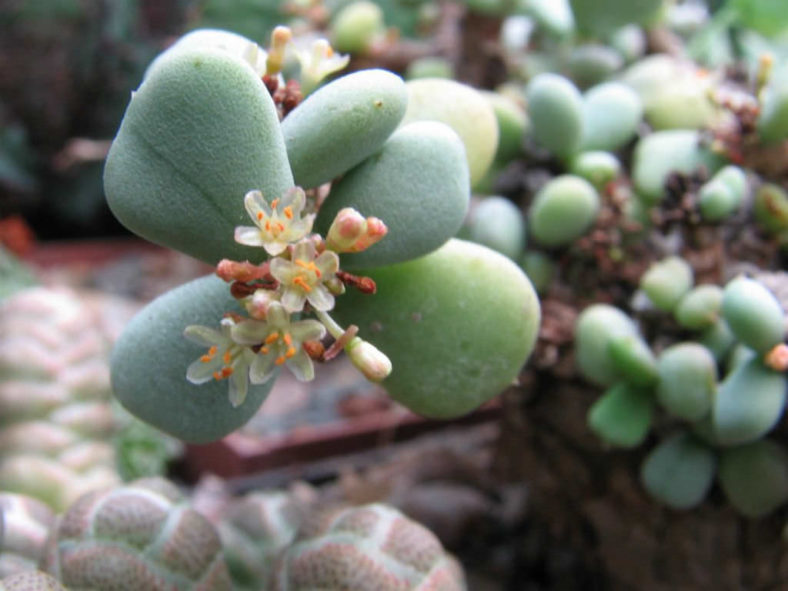Scientific Name
Ceraria pygmaea (Pillans) G.D.Rowley
Common Name(s)
Pygmy Porkbush
Synonym(s)
Portulacaria pygmaea
Scientific Classification
Family: Portulacaceae
Subfamily: Portulacarioideae
Genus: Ceraria
Origin
Ceraria pygmaea is native to South Africa (Cape Province) and Namibia.
Description
Ceraria pygmaea, also known as Portulacaria pygmaea, is a dwarf, dioecious succulent with a tuberous rootstock and small branches that are woody at the base and spread and often hang, staying close to the ground. The tuber can grow up to 4 inches (10 cm) in diameter. The leaves are thick, fleshy, glabrous, blue-green at first, later yellowish-green, and fall off almost to the touch. They can measure up to 0.6 inches (1.5 cm) long and 0.4 inches (1 cm) in diameter.
The tiny flowers are white to pale pink and appear in terminal clusters of 2 to 6.

How to Grow and Care for Ceraria pygmaea
Light: This plant requires at least 6 hours of direct sunlight daily but can tolerate partial shade. If grown indoors, place it in a sunny window.
Soil: It is very important to have well-draining soil for a healthy plant. While many growers make their own soil mix, commercial soil for succulents with extra perlite or another grit will also work fine.
Hardiness: Ceraria pygmaea thrives in warm, sunny climates and can tolerate light frost. It grows best in USDA Plant Hardiness Zones 9b to 11b, with average minimum winter temperatures ranging from 25 to 50 °F (-3.9 to 10 °C).
Watering: In spring and fall, water thoroughly and wait until the top of the soil dries out before watering again. Water less during winter when growth slows down significantly. During the summer, when it is usually dormant, water the plant only enough to keep the leaves from shriveling.
Fertilizing: Ceraria pygmaea is a slow-growing plant that does not need much feeding. However, it will benefit from a small amount of organic fertilizer during the growing season.
Repotting: It is best to repot this plant every 2 to 3 years or when it becomes top-heavy, even though it does not mind being root-bound. Repotting is recommended during summer.
Propagation: Although it can be grown from seeds, Ceraria pygmaea is usually started by stem cuttings. Always take cuttings when the plant is actively growing.
Toxicity of Ceraria pygmaea
Ceraria pygmaea is non-toxic to pets and humans.
Links
- Back to genus Ceraria
- Succupedia: Browse succulents by Scientific Name, Common Name, Genus, Family, USDA Hardiness Zone, Origin, or cacti by Genus
Photo Gallery
Click on a photo to see a larger version.


